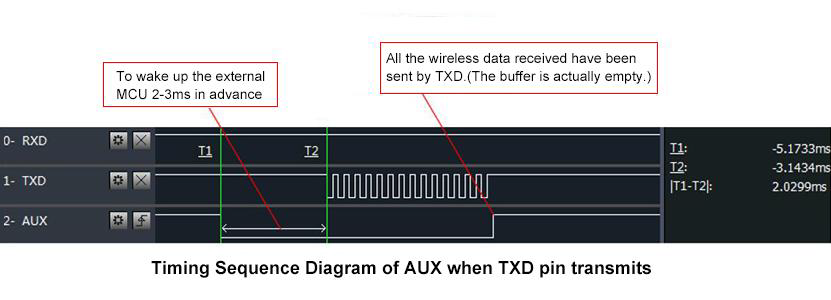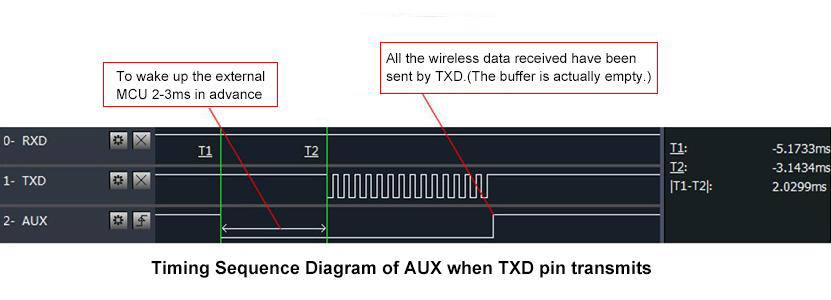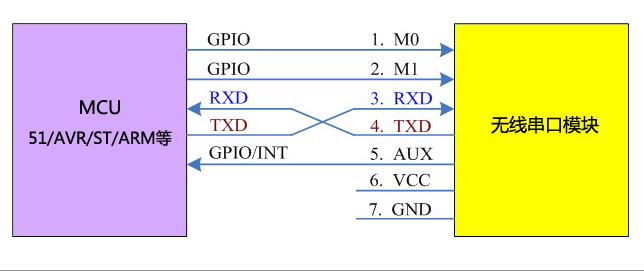The E32-TTL-100 SX1278 LoRA Module
I managed to grab one of those LoRa modules that litter the market today. Mine’s a E32-TTL-100 module which is said to be based on Semtech’s SX1278. Here’s the specifications for the module:
- Module size:21*36mm
- Antenna type:Standard SMA antenna (FREE)
- Power supply:2.3V-5.5V DC
- Communication level:5.2V(max)
- Transmission distance:3000m(max)
- Maximum power:2dB(100mW)
- Air rates:2.4Kbps
- Emission current:130mA @ 100mW
- Receiving current:13.5mA @ Mode 0, Mode 1
- Sleep Current:2.0uA(M1=1,M1=0)
- Emission length:256 Byte
- Receive length:256 Byte
- Communication Interface:UART
- RSSI support:Yes
- Working frequency:410MHz-441MHz(Default 433MHz)
- Operating temperature:-30?~+85?
- Receiver sensitivity:-130dBm @ 1.2Kbps
A range of 3km! I doubt this is possible for non-LOS (line of sight) but let’s see.
The module has 7 pins as shown:

It’s UART-based so I think RXD, TXD (and of course VCC and GND) are self-explanatory. Let me try to explain the M0, M1, and AUX pins.

Configuring Modes
It turns out, M0 and M1 are used to set the modes of the module. There are four modes: normal, wake up, power-saving and sleep. Here’s a useful table:
| Mode |
M1 |
M0 |
Explanation |
| Normal |
0 |
0 |
UART and wireless channel is good to go |
| Wake-Up |
0 |
1 |
Same as normal but a preamble code is added to transmitted data for waking-up the receiver. |
| Power-Saving |
1 |
0 |
UART is disable and wireless is on WOR(wake on radio) mode which means the device will turn on when there is data to be received. Transmission is not allowed. |
| Sleep |
1 |
1 |
Used in setting parameters. Transmitting and receiving disabled. |
The AUX Pin
The AUX pin serves as a flag for checking if the data has been sent or when data have been received. It’s also used to check if the module is still in self-check procedure which happens during power-on and exit from sleep mode.
When the module is idle, the AUX pin stays high. If there is data is to be sent, the AUX pin stays low 2-3 ms prior to the data being sent to the transmit buffer. The AUX pin goes back to high if the transmit buffer is clear (i.e., the data has been sent wirelessly). Similarly, the AUX pin goes low when there is data on the receive buffer.
The logic states of AUX pin are summarized below:



Parameter Setting
As mentioned, when the module is in sleep mode (M0=M1=1), we can change some options like baud rate, UART format, etc. The commands for changing parameters must be sent using 9600 baud, 8N1.
The format for changing parameters is : 0xC0/0xC2 ADDH ADDL SPED CHAN OPTION. When you want the parameters to be saved to EEPROM, use 0xC0. Otherwise, use 0xC2. The rest are bytes with the following possible values:
| Item |
Description |
Notes |
| ADDH |
Module high address byte (00h by default) |
|
| ADDL |
Module low address byte (00h by default) |
|
| SPED |
UART Baud Rate and Air Data Rate |
See bit descriptions below. |
| CHAN |
Operating Frequency (0x00 to 0xFF corresponding to 410 to 441 MHz. Default is 0x17 – 433 MHz) |
|
| OPTION |
Other options |
See bit descriptions below. |
SPED Bit Descriptions
| Bit 7 and 6 |
Bit 5, 4, 3 |
Bit 2, 1, 0 |
| UART Parity |
UART Baud Rate |
Air Data Rate |
00:8N1(default)
01:8O1
10:8E1
11:8N1(equal to 00) |
000:1200bps001:2400bps
010:4800bps
011:9600bps(Default)
100:19200bps
101:38400bps
110:57600bps
111:115200bps |
000:0.3kbps001:1.2kbps
010:2.4kbps(Default)
011:4.8kbps
100:9.6kbps
101:19.2kbps
110:19.2kbps(equal to 101)
111:19.2kbps(equal to 101) |
OPTION Bit Descriptions
| Bit 7 |
Bit 6 |
Bit 5,4,3 |
Bit 2 |
Bit 1 and 0 |
| Fixed Transmission |
I/O Drive Mode |
Wireless Wake-up Time |
FEC (Forward Error Correction) Switch |
Transmission Power |
| 0: transparent transmission (default)1: fixed transmission (first three bytes can be used as high/low address and channel) |
0: TXD, RXD, AUX are open-collectors1: TXD, RXD, AUX are push-pulls/pull-ups |
000:250ms(default)001:500ms
010:750ms
011:1000ms
100:1250ms
101:1500ms
110:1750ms
111:2000ms
) |
0:Turn off FEC1:Turn on FEC(Default) |
00: 20dBm(Default)01: 17dBm
10: 14dBm
11: 10dBm |
So for example, you want to change the UART baud rate to 115200, 8N1 mode, air data rate to 19.2kbps, use the default 433 MHz operating frequency, fixed transmission mode, push-pull pins, 250 ms wake-up time, FEC on, and 20 dBm transmission power. Set M0 and M1 and send the following data through UART:
|
|
0xC0 0x00 0x00 0x3D 0x17 0xC4
|
For reading the current options, send the commands:
This is for reading the version number:
And for resetting the module:
Bob Chan has created an example sketch for using the E32-100 LoRa module with the Arduino. The library is available at his github repository. His library allows you to change parameters as I have discussed.
To use the above library, follow this connection:
| UNO/NANO(5V MODE) |
|
E32-TTL-100 |
| D7 |
|
M0 |
| D8 |
|
M1 |
| A0 |
|
AUX |
| D10(Rx) |
4.7k Ohm |
Tx |
| D11(Tx) |
4.7k Ohm |
Rx |

Applications
- Wireless telemetry for transmitting meter readings, sensor data
- Remote control applications with fast response requirements
- Wireless Home Networking applications
- Point-to-point and point-to-multipoint network topologies
- Wireless mouse, wireless keyboard and other wireless user interface devices
- Wireless data logging applications
- Audience response systems
- Smart Grid systems
- Home Automation Systems
I hope you found this tutorial useful. If you have questions, kindly drop a comment below.
References:














Hey
Best tutorial i’ve seen on this topic. It’s the only usefull sheet on that module.
I have some advice tho!!
Be careful when using arduino other than uno since not all pins can support SoftwareSerial!!! take care
Also some chinese modules (my modules from aliexpress) come with different defaults! so the connection wont work.
Even the reset command wont work! so use that sheet to set the same settings for both modules